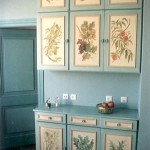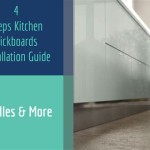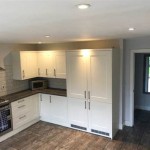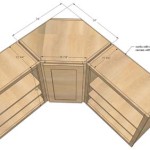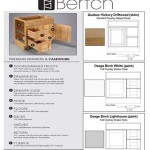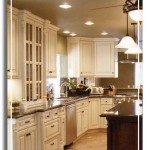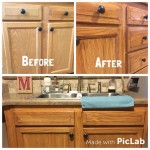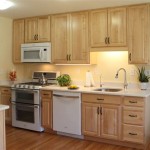Kitchen Cabinets and Flooring Ideas: A Comprehensive Guide
The kitchen, often considered the heart of the home, demands careful consideration in its design. Two key elements that significantly contribute to the overall aesthetic and functionality of a kitchen are the cabinets and the flooring. Harmonizing these two components is crucial for creating a cohesive and visually appealing space. This article will explore various kitchen cabinet and flooring ideas, delving into different materials, styles, and design principles to aid in crafting a kitchen that reflects individual preferences and meets practical needs.
Selecting the right cabinets and flooring involves a multi-faceted approach. It requires assessing the existing kitchen layout, considering the desired style (e.g., modern, traditional, farmhouse), and evaluating the budget. Furthermore, factors such as durability, maintenance requirements, and the overall color scheme must be taken into account to ensure a satisfactory and long-lasting result. The interplay between these elements determines the final outcome and impacts the perceived value and usability of the kitchen.
Cabinet Materials and Styles
Kitchen cabinets are available in a wide array of materials, each with its own distinct characteristics, advantages, and disadvantages. Common materials include wood, laminate, metal, and thermofoil. The choice of material directly affects the appearance, durability, and cost of the cabinetry.
Wood: Wood cabinets are a classic choice, offering warmth and natural beauty. Different wood species, such as oak, maple, cherry, and walnut, provide varied grain patterns and colors. Oak is known for its durability and prominent grain, while maple offers a smoother surface and a lighter tone. Cherry provides a rich, reddish-brown hue, and walnut offers a darker, more sophisticated appearance. Solid wood cabinets are generally more expensive but offer superior durability and the option for refinishing.
Laminate: Laminate cabinets are a cost-effective alternative to wood. They consist of a thin layer of decorative laminate bonded to a core material, such as particleboard or MDF (Medium-Density Fiberboard). Laminate is available in a vast range of colors, patterns, and textures, including wood-grain finishes that mimic the look of real wood. While laminate is relatively durable and easy to clean, it is not as resistant to scratches and dents as solid wood.
Metal: Metal cabinets offer a sleek and modern aesthetic. Stainless steel is a popular choice for its durability, hygienic properties, and resistance to corrosion. Metal cabinets are often used in commercial kitchens but are increasingly finding their way into residential spaces. They require minimal maintenance and are easy to clean, but can be susceptible to fingerprints and smudges.
Thermofoil: Thermofoil cabinets are made by wrapping MDF with a thin layer of vinyl. This process creates a smooth, seamless finish that is resistant to moisture and easy to clean. Thermofoil cabinets are available in a variety of colors and styles, including shaker and slab door designs. However, they are less heat-resistant than other materials and can be prone to peeling or bubbling under high temperatures.
In addition to material, the style of the cabinet doors also plays a crucial role in the overall kitchen design. Common cabinet door styles include:
Shaker: Shaker cabinets are characterized by their simple, clean lines and recessed panel. This style is versatile and complements a variety of kitchen designs, from traditional to modern farmhouse.
Slab: Slab cabinets feature a flat, unadorned surface, creating a minimalist and contemporary look. This style is ideal for modern and Scandinavian-inspired kitchens.
Raised Panel: Raised panel cabinets feature a raised center panel, adding depth and dimension to the cabinet door. This style is often used in traditional and formal kitchens.
Glass-Front: Glass-front cabinets allow homeowners to display their dishware and decorative items. This style can add visual interest and create a more open and airy feel. Glass-front cabinets are often used in combination with solid door cabinets.
Flooring Materials and Considerations
The kitchen floor endures significant wear and tear, making durability and ease of maintenance essential considerations. Selecting the appropriate flooring material requires careful evaluation of factors such as resistance to water, stains, and scratches, as well as comfort underfoot and aesthetic appeal.
Tile: Tile is a popular choice for kitchen flooring due to its durability, water resistance, and wide range of styles and colors. Ceramic and porcelain tiles are both excellent options, with porcelain being denser and more resistant to moisture absorption. Tile can mimic the look of natural stone, wood, or even concrete, offering versatility in design.
Hardwood: Hardwood flooring adds warmth and elegance to the kitchen. However, it is more susceptible to water damage than tile and requires proper sealing and maintenance. Engineered hardwood, which consists of a thin layer of hardwood veneer over a plywood core, is a more stable option that is less prone to warping and cupping in humid environments.
Vinyl: Vinyl flooring is a cost-effective and durable option that is available in a variety of styles, including sheet vinyl, vinyl tile, and luxury vinyl plank (LVP). Vinyl is water-resistant, easy to clean, and relatively comfortable underfoot. LVP offers the look of hardwood or tile with the added benefits of vinyl.
Laminate: Laminate flooring is similar to laminate cabinets in that it consists of a thin layer of decorative laminate bonded to a core material. Laminate flooring is durable, scratch-resistant, and easy to clean. However, it is not as water-resistant as vinyl or tile and can be damaged by standing water.
Concrete: Concrete flooring offers a modern and industrial aesthetic. It is durable, easy to maintain, and can be stained or polished to achieve a variety of finishes. Concrete flooring can be cold and hard underfoot, but this can be mitigated by adding radiant heating.
Furthermore, consider the color and pattern of the flooring. Lighter colors can make a small kitchen appear larger and brighter, while darker colors can create a more dramatic and sophisticated look. Patterns can add visual interest and camouflage dirt and imperfections.
Harmonizing Cabinets and Flooring
Achieving a cohesive kitchen design requires careful coordination between the cabinets and flooring. Several strategies can be employed to create a harmonious and visually appealing space. These strategies involve considering color palettes, material textures, and overall design styles.
Color Coordination: Maintaining a consistent color palette is crucial for creating a unified look. One approach is to choose cabinets and flooring in complementary colors. For example, light-colored cabinets paired with dark-colored flooring can create a striking contrast. Alternatively, using similar shades of the same color can create a more subtle and cohesive effect. When selecting colors, consider the amount of natural light in the kitchen. Dark colors can make a small, poorly lit kitchen feel even smaller, while light colors can brighten and expand the space.
Material Texture: The texture of the cabinet and flooring materials can significantly impact the overall aesthetic. Combining smooth cabinets with textured flooring, or vice versa, can add visual interest and depth. For example, pairing sleek, slab cabinets with textured tile flooring that mimics natural stone can create a balanced and sophisticated look. Conversely, combining textured cabinets with smooth flooring can create a more relaxed and inviting atmosphere.
Design Style Consistency: Maintaining a consistent design style is essential for creating a cohesive kitchen. If the kitchen is designed in a modern style, opt for sleek cabinets and minimalist flooring options, such as slab cabinets and concrete flooring. For a traditional kitchen, consider shaker cabinets and hardwood flooring. Farmhouse-style kitchens often feature painted cabinets, such as white or gray, paired with wood-look flooring, such as luxury vinyl plank.
Consider the Countertops and Backsplash: The countertops and backsplash also play a significant role in the overall kitchen design. When selecting cabinets and flooring, consider how they will complement the countertops and backsplash. For example, if the countertops are made of a busy granite, opt for simpler cabinets and flooring to avoid overwhelming the space. Conversely, if the countertops are a solid color, more visually interesting cabinets and flooring can be used.
Lighting: Lighting can significantly affect the appearance of cabinets and flooring. Natural light is ideal, but artificial lighting can also be used to enhance the colors and textures of the materials. Under-cabinet lighting can highlight the countertop and backsplash, while recessed lighting can provide overall illumination. Pendant lights can add visual interest and create a focal point.
Properly integrating these elements allows one to create a kitchen that is both functional and aesthetically pleasing, reflecting individual style while meeting the demands of daily use. By carefully considering the materials, styles, and design principles discussed above, homeowners can transform their kitchen into the heart of their home.

13 Ideas For Upgrading Your Kitchen Floors Extra Space Storage

10 Kitchen Floor Ideas To Modernize Your Home

30 Kitchen Flooring Options And Design Ideas

2024 Kitchen Flooring Trends 20 Ideas To Update Your Style Inc

Popular Kitchen Cabinet Colors Ideas Trends Flooring America

10 Kitchen Floor Ideas To Modernize Your Home

Kitchen Flooring Trends 2024 Drury Design

13 Ideas For Upgrading Your Kitchen Floors Extra Space Storage

30 Kitchen Flooring Options And Design Ideas

2024 Kitchen Cabinet Trends 20 Ideas Flooring Inc
Related Posts

